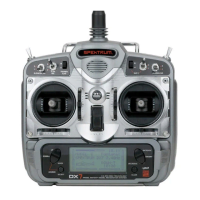Federal Aviation Administration
Purpose
This advisory outlines safety standards for operations of model aircraft. We encourage voluntary compliance
with these standards.
Background
Attention has been drawn to the increase in model aircraft operation. There is a need for added caution when
operating free flight and radio controlled craft in order to avoid creating a noise nuisance or a potential hazard to
full-scale aircraft and persons and/or property on the surface.
Operating Standards
Modelers generally are concerned with safety and exercise good judgment when flying model aircraft. However,
in the interest of safer skies, we encourage operators of radio controlled and free flight models to comply with
the following standards:
a. Exercise vigilance in locating full-scale aircraft (get help if possible) so as not to create a
collision hazard.
b. Select an operating site at sufficient distance from populated areas so you do not create a noise
problem or a potential hazard.
c. Do not fly higher than 400 feet above the surface.
d. Always operate more than three miles from the boundary of an airport unless you are given
permission to be closer by the appropriate air traffic control facility in the case of an airport for which
a control zone has been designated or by the airport manager in the case of other airports.
e. Do not hesitate to ask for assistance in complying with these guidelines at the airport traffic control
tower or air route traffic control center nearest the site of your proposed operation.
Information Provided By
Director, Air Traffic Service Federal Aviation Administration, Washington, D.C.
Servo Precautions
• Do not lubricate servo gears or motors.
• Do not overload retract servos during retracted or extended conditions. Make sure they are able to
travel their full deflection. Overloading or stalling a servo can cause excessive current drain.
• Make sure all servos move freely through their rotations and no linkages hang up or bind. A binding
control linkage can cause a servo to draw excessive current. A stalled servo can drain a battery pack in
a matter of minutes.
• Correct any control surface “buzz” or “utter” as soon as it is noticed in-ight, as this condition
can destroy the feedback potentiometer in the servo. It may be extremely dangerous to ignore such
“buzz” or “flutter.”
• Use the supplied rubber grommets and brass servo eyelets when mounting your servos. Do not over-
tighten the servo mounting screws, as this negates the dampening effect of the rubber grommets.
• Ensure the servo horn is securely fastened to the servo. Use only the servo arm screws provided; the
size is different from other manufacturers.
• Discontinue to use servo arms when they become “yellowed” or discolored. Such servo arms may be
brittle and can snap at any time, possibly causing the aircraft to crash.
• Check all related mounting screws and linkages frequently. Aircraft often vibrate, causing linkages and
screws to loosen.
General Notes
Radio controlled models are a great source of pleasure. Unfortunately, they can also pose a potential hazard if
not operated and maintained properly.
It is imperative to install your radio control system correctly. Additionally, your level of piloting competency must
be high enough to ensure that you are able to control your aircraft under all conditions. If you are a newcomer to
radio controlled flying, please seek help from an experienced pilot or your local hobby store.
Safety Do’s and Don’ts for Pilots
• Ensure that your batteries have been properly charged prior to your initial ight.
• Keep track of the time the system is turned on so you will know how long you can safely operate
your system.
• Perform a ground range check prior to the initial ight of the day. See the “Daily Flight Checks
Section” for information.
• Check all control surfaces prior to each takeoff.
• Do not y your model near spectators, parking areas or any other area that could result in injury to
people or damage of property.
• Do not y during adverse weather conditions. Poor visibility can cause disorientation and loss of
control of your aircraft. Strong winds can cause similar problems.
• Do not point the transmitter antenna directly toward the model. The radiation pattern from the tip of the
antenna is inherently low.
• Do not take chances. If at any time during ight you observe any erratic or abnormal operation,
land immediately and do not resume flight until the cause of the problem has been ascertained and
corrected. Safety can never be taken lightly.

